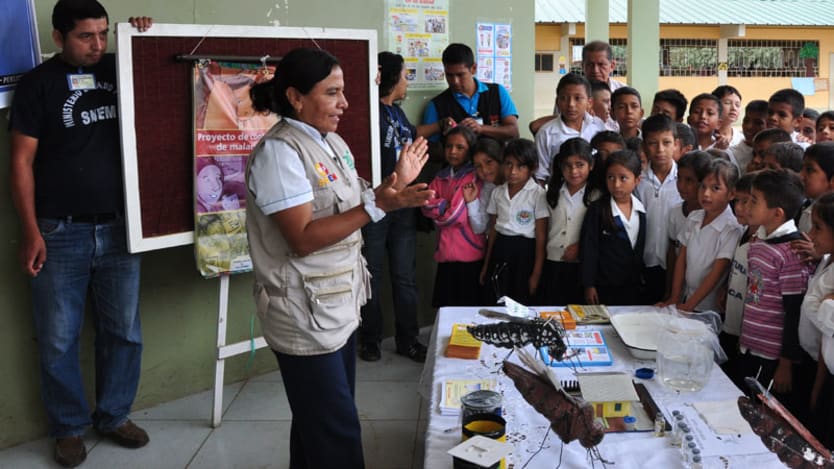
People often ask me whether burnout is a problem of the organization or of the individual. Am I at risk of burnout because I am a perfectionist, demand the impossible of myself, and have no life outside work? Or am I at risk of burnout because not only am I overworked and swamped with paperwork, but my manager is a bully and my organization overly demanding?
As the saying goes, it takes two to tango. But when it comes to burnout, it’s the one leading who carries more responsibility. So, what is burnout, who is at risk, and how can organizations prevent it beyond enlisting an army of stress counselors?
What is burnout?
First of all, what is burnout? Let say what it is not: it’s not about having the odd day when you feel tired and overworked. Burnout is much more serious: experts define it as a syndrome of physical, mental and emotional exhaustion, depersonalization, and reduced personal accomplishment that can occur among individuals who work with people in some capacity. In other words, burnout creeps up, leaving us physically, mentally and emotionally depleted, as well as frustrated, disillusioned, cynical, ineffective and emotionally distant from those around us, including the ones we are meant to serve. All this may be accompanied by disturbed sleep, crying, staring at the screen of your computer without getting much done, a sense of guilt, angry reactions, chain-smoking, too much drinking, and social withdrawal. Sound familiar?
Webinar: Becoming an international humanitarian aid worker
As millions of civilians across the globe continue to flee armed conflicts, natural disasters and the impacts of climate change, skilled humanitarian professionals are as important as ever in alleviating human suffering. The challenges faced by these humanitarian aid workers have changed over the years and so to has the way in which careers in this sector begin and evolve.
I won’t bore you with platitudes such as “aid work is challenging.” Of course it is, and that is precisely why many of us chose it in the first place. Many aid professionals love a good challenge and are not up for a regular 9-5 job. Yet many complain that some humanitarian organizations are not very humane to their staff — citing problems of overwork, limited rewards, bullying and lack of civility. Burnout researchers indicate six main contributing factors to burnout: work overload; lack of control over the work; insufficient rewards; workplace community problems, such as incivility and a lack of support among coworkers; lack of fairness, such as inequality of pay, promotions or workload; and conflict between one’s personal values and the requirements of a job.
Combine these structural problems with the idea — held by many who take up aid work — that a job in the sector will provide a sense of existential meaning and fulfillment, and you have the perfect recipe for disaster.
Who’s at risk for burnout?
While many aid professionals seem fairly resilient when it comes to coping with volatile political contexts, it is the mismatch between values and practice — a sort of double-speak — that aid agencies throw at them that pave the way for burnout.
If burnout is indeed a structural problem, those who are more prone to burnout are the ones who find it hard to accept that there will always be a gap between the promises of a job in aid and its reality.
“In order to burn out a person needs to have been on fire at one time” writes burnout expert Ayala Pines. Those who are committed to "a cause” are at particular risk of burnout because they have ideals and expectations about how the world — including the organization they work for — should look. Often they search for a sense of purpose in their work and a match between the values they hold dear and their professional expression. When they bring perfectionism and high expectations to a dysfunctional organization, burnout may be the outcome. Mark Williams, emeritus professor of clinical psychology at the University of Oxford, reminds us that it is is often committed and conscientious people — and people whose level of self-worth and self-confidence is closely dependent on their work performance — who are likely to burn out.
A word of caution: when taking on a new position, mind the gap between your idealized view of a job in aid, and its day-to-day reality.
How can organizations prevent aid worker burnout?
In my new book on ways to prevent burnout in aid, I emphasize that while each one of us is called to have a life beyond work, the core of burnout prevention does not simply lie in self-care. Instead, it rests in addressing power issue at work and creating healthy organizations — and healthy doesn’t mean perfect, so keeping our expectations in check is essential.
Rather than an army of stress counselors, here’s what we need to prevent burnout: dignified work environments where people feel respected and their work is appreciated. Managers who are capable of addressing conflicts and not sweeping them under the carpet. Clear and realistic job descriptions (is it just me, or are most job descriptions in the sector meant for Superman or Wonder Woman?). Fair contracts, less bureaucracy, learning opportunities and a culture of accountability, responsibility and care.
It’s the day-in and day-out that wears people down, so while it is non-negotiable to have appropriate staff care policies in place, a culture of informal support is essential. One of the places that struck me the most was a Syrian NGO in Turkey where staff had their lunch break together on a regular basis and played ping-pong in the office to let steam off and have fun. This was not an attempt to adopt Google’s perks to make staff more effective (believe me, they did not have the budget for that), but a genuine understanding on behalf of its founder that a healthy workplace keeps people committed to what matters: helping people in need. Amid huge suffering, this NGO was like an oasis not just for the Syrian kids they worked with, but also for its staff, who themselves had fled war in neighboring Syria.
You may have come across the expression “A fish stinks from the head down.” Like in the example of the Syrian NGO, it is managers and CEOs who create the vibe and culture that permeate an organization. If staff are burned out, something is generally off at the top. In that case, a ping-pong table is not enough.
Join the Devex community and access more in-depth analysis, breaking news and business advice — and a host of other services — on international development, humanitarian aid and global health.








